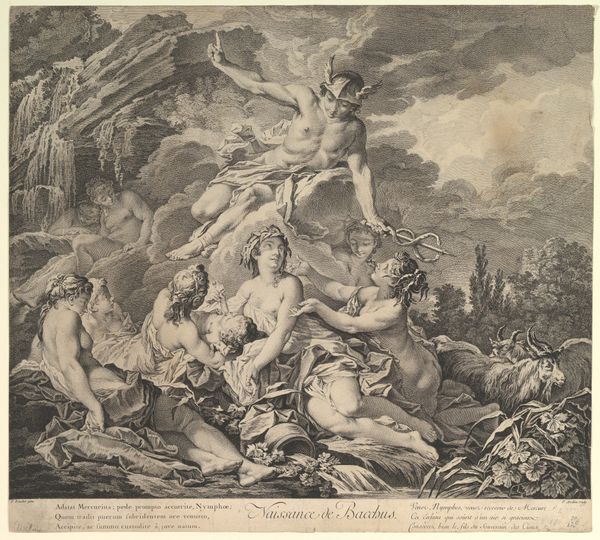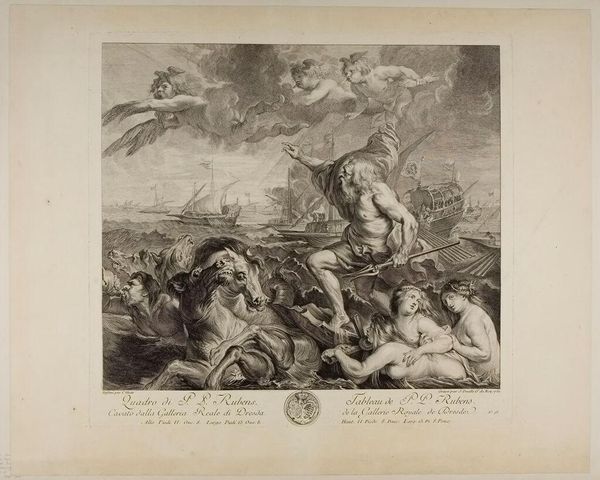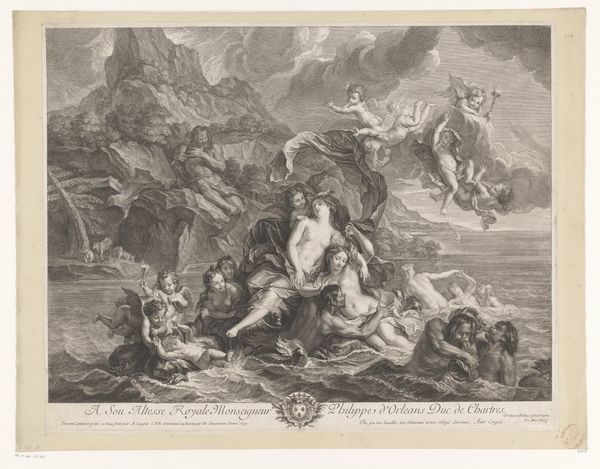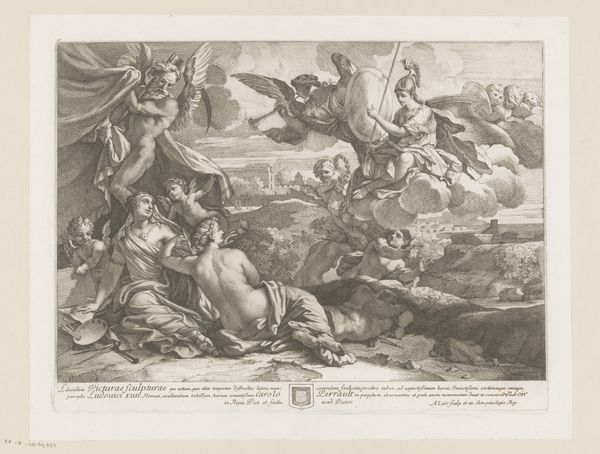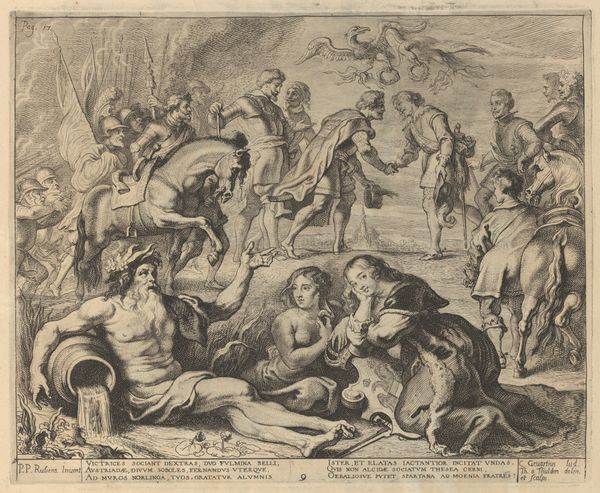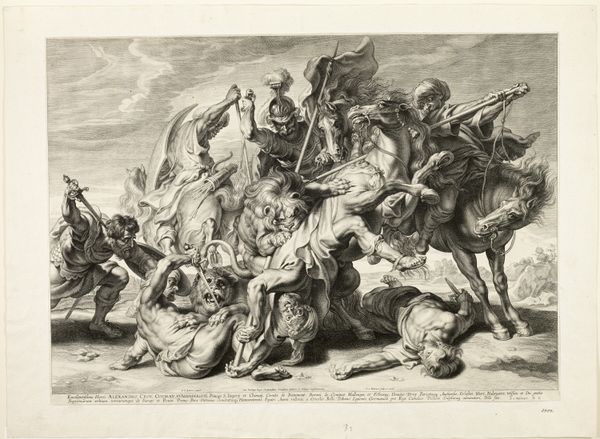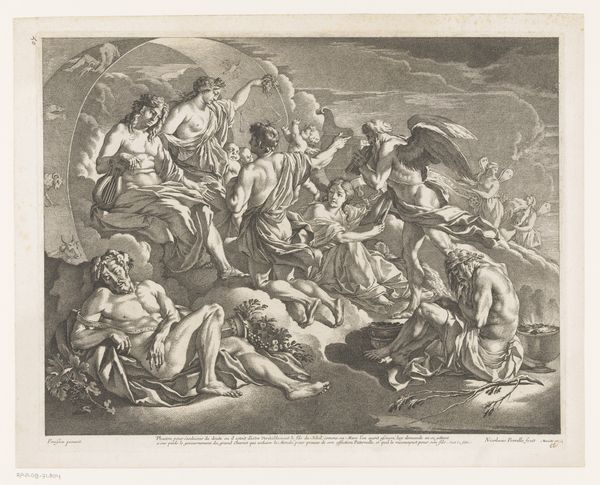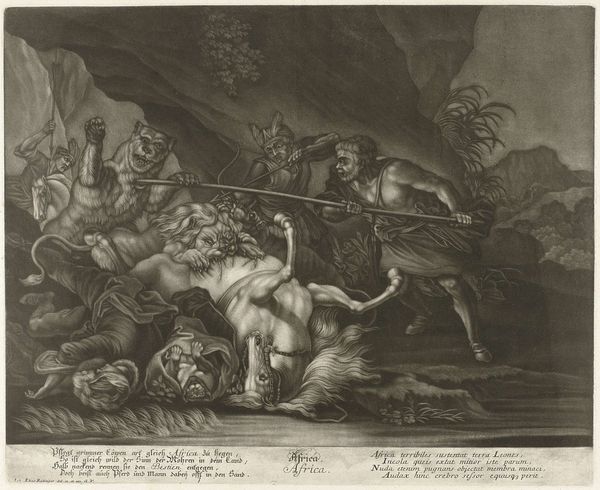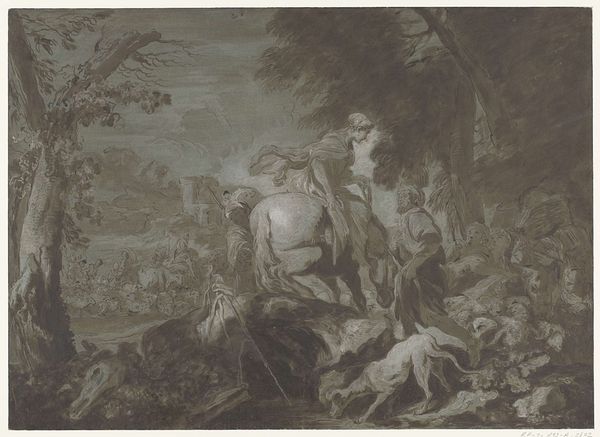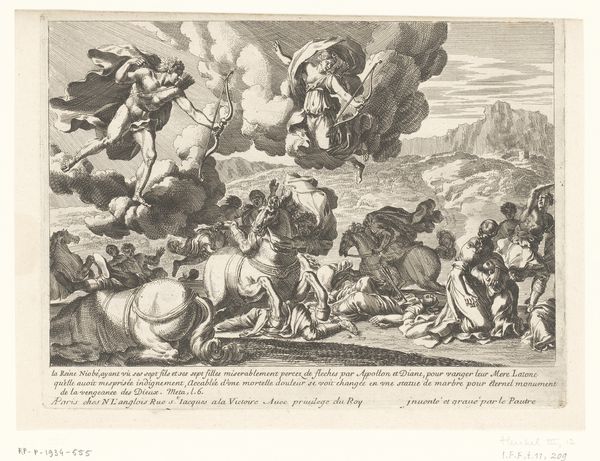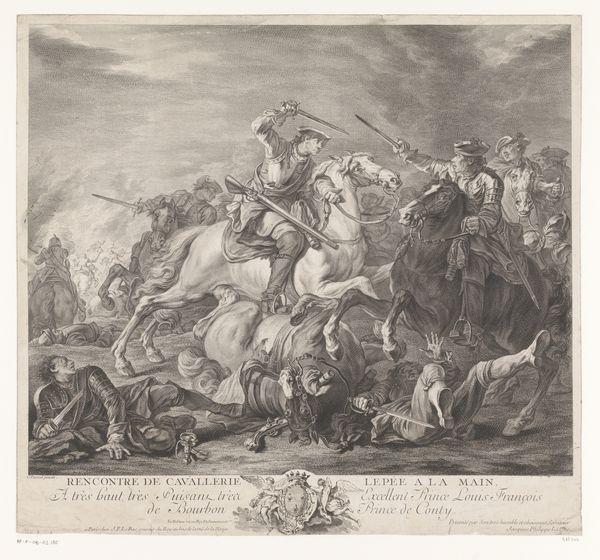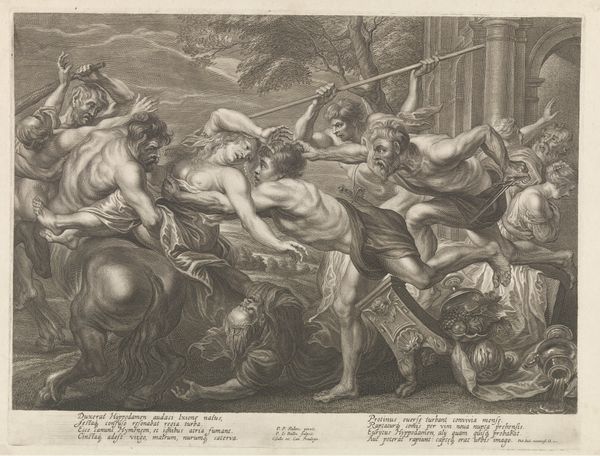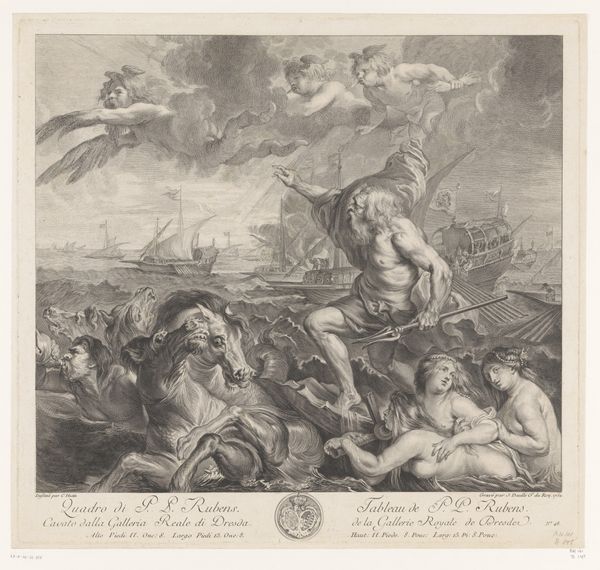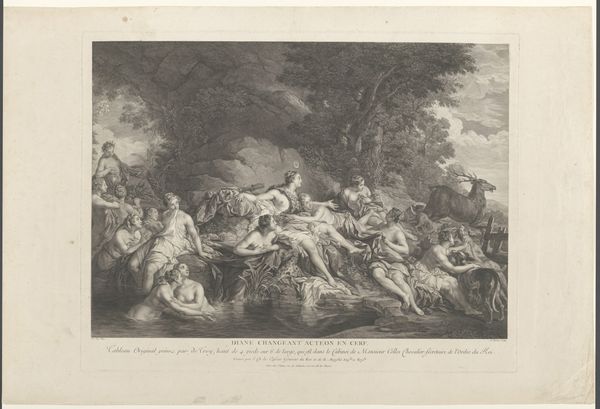
Dimensions: Sheet: 16 3/4 x 18 13/16 in. (42.5 x 47.8 cm)
Copyright: Public Domain
Curator: Let's consider this intriguing engraving: Jean Claude Danzel's "Neptune and Amymone," which historians place between 1752 and 1809. The work resides here at the Met. Editor: Wow, what a tempestuous scene! Neptune, massive and muscular, bursting onto the shore… Amymone seems startled, and a bit terrified. The whole thing feels overwhelmingly dramatic, almost theatrical. Curator: Absolutely, and the visual rhetoric of Baroque and Romanticism certainly intertwine here. Danzel uses the narrative of Neptune and Amymone, pulled from classical mythology, to engage themes of power, vulnerability, and perhaps even the complexities of consent within these power dynamics. Consider how the female form is presented – both idealized and submissive. Editor: Hmm, I see what you mean. Her gaze is upward, imploring almost. But Neptune… his gaze isn't exactly tender, is it? He's all brute force. I can't help but wonder about the undercurrents in presenting this encounter. The waves almost seem to mirror his unrestrained emotion. Curator: That's a compelling reading. Remember that we need to locate the production and consumption of this image within a particular societal frame; one that saw such forceful displays as both heroic and perhaps titillating. Think, too, of the artistic influences—the echoes of earlier depictions of mythological scenes. Danzel’s composition situates itself in a lineage of representing such narratives with their inherent gendered and power-laden tensions. Editor: So it's not just a pretty picture of gods and goddesses. There are loaded implications embedded within the very fabric of its creation. The putti floating around only underscores the romanticism of the scene, albeit a twisted version of it. But you're right; the drama is definitely performative and historically coded. The artist, as interpreter and shaper of culture, isn't separate from it either. Curator: Precisely. By studying "Neptune and Amymone," we confront a confluence of art history, gender theory, and power dynamics, enriching our grasp of this captivating composition. Editor: I agree. Seeing it now through this historical lens has altered my perspective entirely. What seemed at first a scene of mythological drama is really a fascinating artifact embedded within shifting societal currents.
Comments
No comments
Be the first to comment and join the conversation on the ultimate creative platform.
